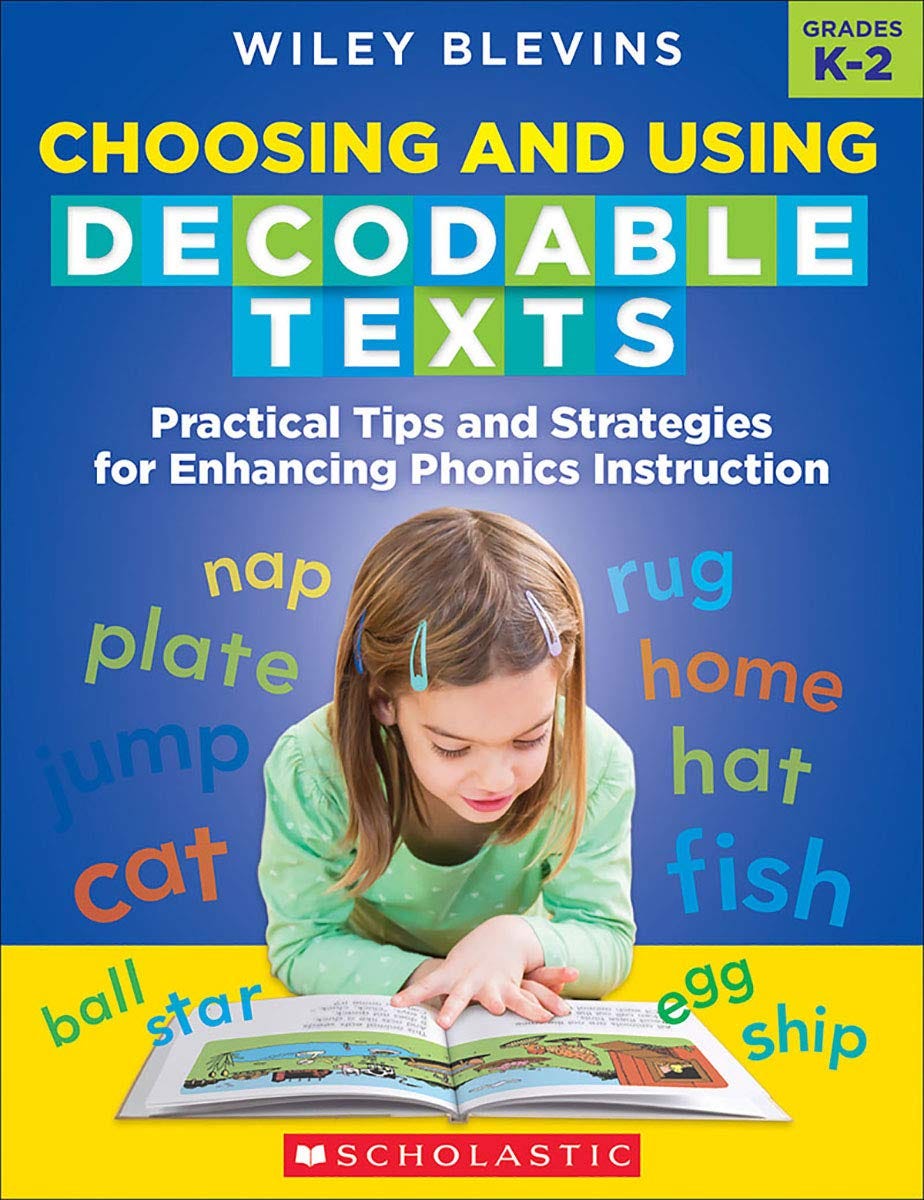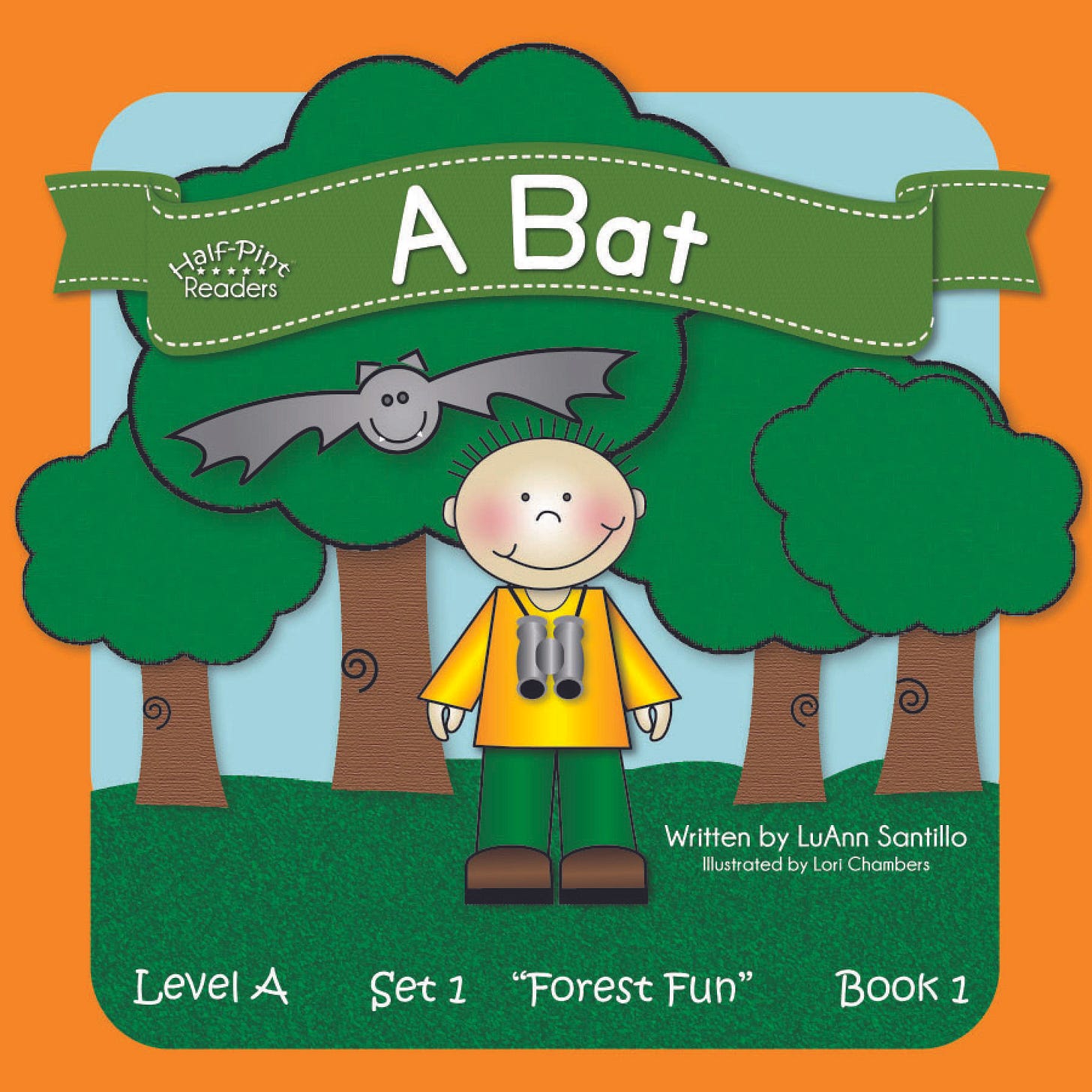I’ve never been a fan of decodable books with a controlled vocabulary. You know, the ones where it’s very apparent that someone is trying to use as many short i words as possible? I’ve come across many books that are quite decodable and have no issue with them as far as readability; but the ones that are written specifically to aid reading instruction in a controlled manner all seem horrible. Horrible because they don’t seem to make any sense to me and if they don’t make sense to me, how can they possibly make sense to a five-year-old?
I have written many fluency ladders and continuous texts for my budding readers as well as purchased some decodable passages. But I knew—two years ago—that I was going to have to learn more about decodable books and figure out how I wanted to incorporate them into my instruction. I would like to thank Wiley Blevins, author of Choosing and Using Decodable Texts: Practical Tips and Strategies for Enhancing Phonics Instruction, for providing me with exactly what I needed to know, as well as alleviating my guilt for not liking decodable books and confirming my reasons as to why.
Don’t get me wrong. Blevins is no proponent of using leveled texts; in fact, he is a big fan of decodable texts and writes many titles himself.
Apparently I’m not the only one who hasn’t been impressed with decodable books over the years. Blevins has heard it straight from many teachers over the years that they think these books are “boring and stupid.” Curious, he asked teachers to show him the decodable texts provided with their reading programs. He often had to agree; they were boring and stupid.
In the research that supports the use of decodable texts, the standard for decodable texts has always been high; unfortunately, however, some publishers have created weak—to put it nicely—decodable texts. In his book, Wiley discusses what distinguishes strong from weak when it comes to decodable books. There are three criteria:
Comprehensible - “The stories should make sense and follow natural-sounding English spoken and written patterns. No sentences should be in the stories that you, as a proficient speaker and reader of English, have not uttered, written, or read. Vocabulary must be understandable. Words must be derived primarily from children’s speaking and listening vocabularies.”
Instructive - “The majority* of the words must be decodable based on the sound spellings previously taught. In addition, there should be enough words with the new, target phonics skill for children to get ample practice decoding words with that skill. There must be a strong connection between instruction and text.”
*Note - “Research has NEVER given a percentage of decodability, and sources that require or claim a decodability requirement (e.g., 80 percent or 90 percent) have arbitrarily decided on their definition of majority.”
Engaging - Connected, decodable texts must be engaging and worth talking and writing about. Children must have the desire to revisit these texts and repeatedly reread them to develop fluency. For beginning readers, some of the engagement will come from high-quality photos and illustrations.
These three criteria stunned me! I must say that my greatest concerns with decodable texts have always been the comprehensibility and engagement factors. And, if those two criteria cannot be met then it’s hard to imagine that a book would be instructive, no matter what phonics skills are being covered.
I feel relieved that Blevins noticed that some of these criteria were often missing in decodable books. So it wasn’t just me, all these years, after all.
In addition to keeping in mind the three criteria—comprehensible, instructive, engaging—Blevins cautions against using decodable texts with these common issues:
Using low-utility words to try to squeeze in more words with the target skill - Let Lin dab a lip.
Using non-standard English sentence structures - The pup did run at Kit.
Using nonsensical sentences or tongue twisters - Fun Fran flips, flaps, flops.
Using too many easy pronouns that make the meaning difficult to figure out - She did not see it, but she did kick it.
Using too simple language to explain scientific concepts - The sun will make plants rise.
Using odd names to get more decodable words in the story - Ben can see Mem.
Avoiding using the word the just because it is an irregular word.
Wiley Blevins suggests that we think of texts as accountable instead of decodable. We need texts that will hold children accountable for the skills we have taught them. “…yes, it is beneficial if the majority of the words can be sounded out in the text using children’s growing knowledge of phonics. But if one story is more comprehensible and engaging at 65 percent or 70 percent decodable than another story at 80 percent decodable that has stilted sentences and odd language structures, I prefer the story with a slightly lower decodability. Children will still get loads of decoding practice.”
Last year mid-year our school district provided Half Pint Readers decodable books to each kindergarten classroom. Thankfully, these books are (mostly) comprehensible, engaging, and instructive. I started using them last year in February (since we didn’t receive them until January and it took a bit to look them over and organize them and decide how I wanted to use them) and was impressed. My students loved them too. I made a note to consider them for November this year.
Today’s video shows our first day of using them. I think my timing was perfect and I think you’ll agree that these little books are just right, right now, for my students.
The Half Pint Readers website is loaded with activity pages and other fun activities, a scope and sequence, books to read online (for free), and other goodies. There is plenty there that you could use even if you don’t have these books. You might want to check it out!
Randee







Share this post